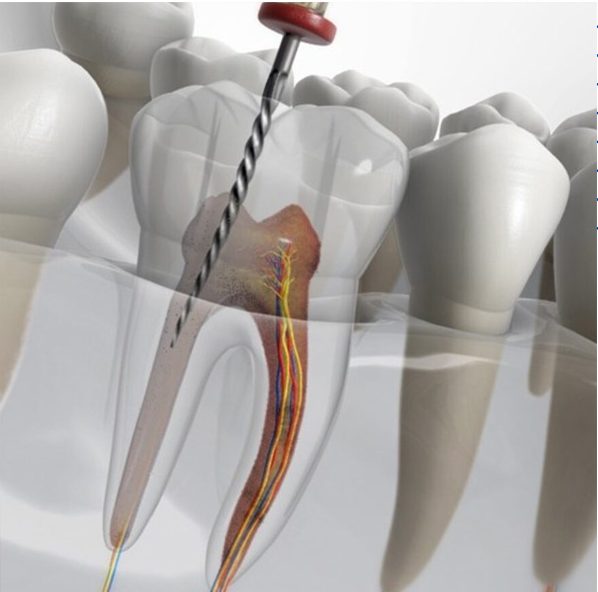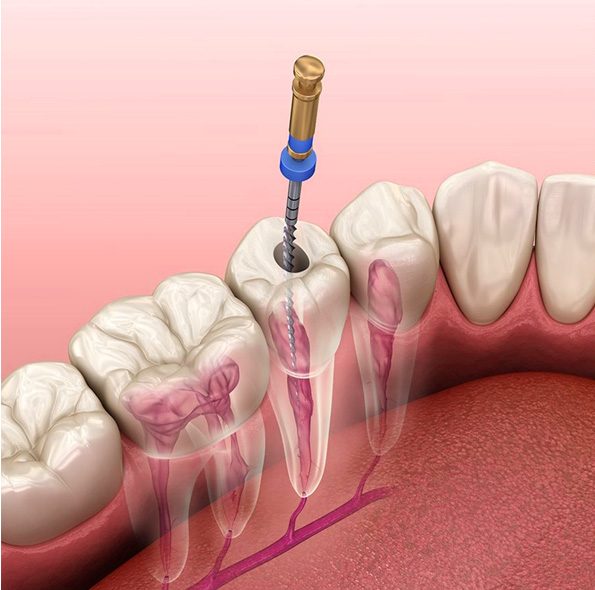Root Canal Treatment
There is a nerve-vascular bundle inside the roots of the teeth, which is popularly referred to as the nerve of the tooth and provides nourishment to the tooth. Due to the lack of timely treatment of caries, the tissues here become damaged or inflamed over time.
Root canal treatment is the process of removing the damaged or inflamed tissue, reshaping and cleaning the root canal, and finally filling this canal with filling materials. In some cases, laser applications are supported to increase the success of root canal treatment. In other words, it is a method that contributes to various traumas, caries and fractures that occur in the teeth. In root canal treatment, the tissue that ensures the vitality of the teeth is removed. The inside of the tooth is washed and cleaned. It is shaped with special tools and root materials compatible with the tooth tissue are placed in the resulting cavity.


There is a tissue called pulp inside the dentin under the enamel layer on the outside of the tooth. The pulp contains nerves, veins, arteries, arteries, connective tissues and lymph vessels. The nerve of each tooth starts from its root tip. Research has shown that more than 95 percent of root canal treatments performed on the tooth root are successful.
During root canal treatment, the patient’s tooth and its surroundings are numbed with local anesthesia. Therefore, no pain is felt. However, some teeth with a lot of pain and infection are difficult to numb. In such a case, advanced numbing methods are used to numb the tooth.
Depending on the condition of the tooth and the problem, root canal treatment can be performed in a single session or may take more than one session. In the root canal treatment of an infected tooth, the number of sessions may be increased to ensure that the infection is completely eliminated. Root canal treatment applied to an uncomplicated, less problematic tooth is usually performed in a single session.



